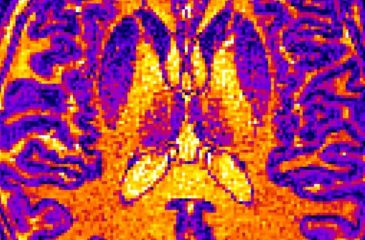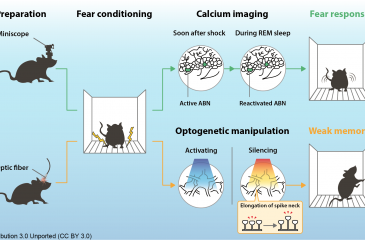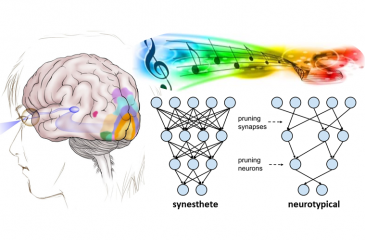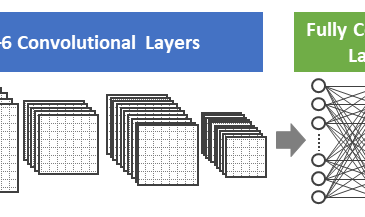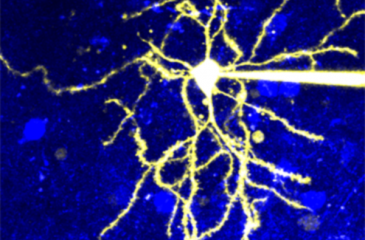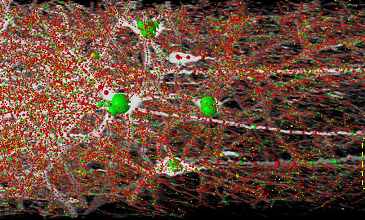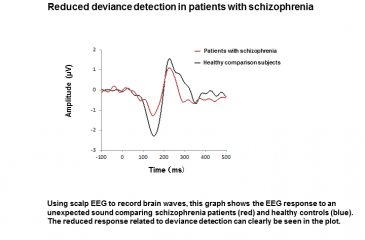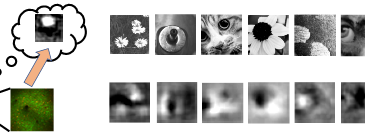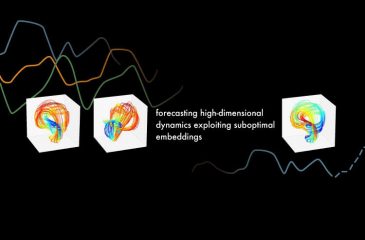Press Release
-
Future mental health care may include diagnosis via brain scan and computer algorithm
Computer IDs differences in brains of patients with schizophrenia or autismMRI images like this one were screened by a machine learning computer algorithm. The algorithm learned to identify the brains of nonpatients, patients diagnos… More
-
Music on the Brain
A study of neurological variation in Japanese classical and Western classical musiciansFor the first time, a study compares, and finds measurable differences, between the brains of Japanese classical and Western classical musicians… More
-
Dreaming with purpose (Joint press release with University of Tsukuba)
Researchers from University of Tsukuba identify neurons responsible for memory consolidation during REM sleep
The activity of ABNs during REM sleep consolidates memory.
Fear learning recruits a population of young adult-born neuron… More -
Why some people may hear colors
Synesthesia (共感覚) may result from incomplete pruning (剪定) of neural connections in the brain during infancy, a study by Director Takao Hensch of International Research Center of Neurointelligence (IRCN)The University of Tokyo Instit… More
-
Classification of Cell Cycle Phase by Image-Based Deep Learning
As anyone peering into a microscope can attest, eukaryotic cells contain a rich landscape of visual features and landmarks whose complex dynamics nearly defy human comprehension.
Could a deep learning AI work with microscopic images to … More -
A new window into psychosis
A new window into psychosis Researchers link psychosis to the omission of chemical rewards in mouse brainsA recent study in mice led a team of researchers in Japan to believe that psychosis may be caused by problems with specialized nerve c… More
-
Sharper Images of Neurons with a Noise-Reducing AI
AI based on deep machine learning continues to serve as a platform for the development of new applications in biological research. With the development of more powerful microscopy systems coupled with novel molecular and cellular label… More
-
Toward “Explainable” Biomarkers for Schizophrenia
Schizophrenia is a common mental illness characterized by disordered sensing and thinking. Symptoms include recurrent episodes of psychosis, including hallucinations and delusions, and can extend to affective and motivational def… More
-
How Does a Mouse’s Visual Cortex “See” the World?
One of the more remarkable talents of the mammalian brain is its ability to convert photons from visual scenes into interpretable patterns of neural signals in the visual cortex. The rules of this conversion of information have been well s… More
-
Wisdom of the Crowd? Building Better Forecasts from Suboptimal Predictors
Researchers at the University of Tokyo and Kozo Keikaku Engineering Inc. have introduced a method for enhancing the power of existing algorithms to forecast the future of unknown time series. By combining the predictions of many subopti… More
